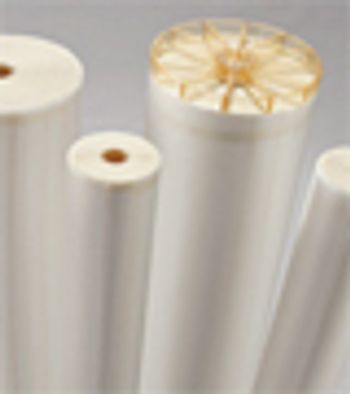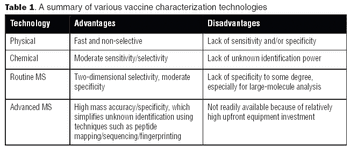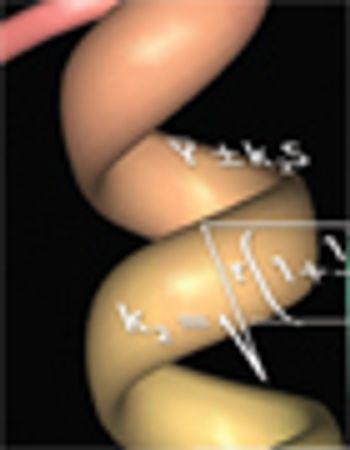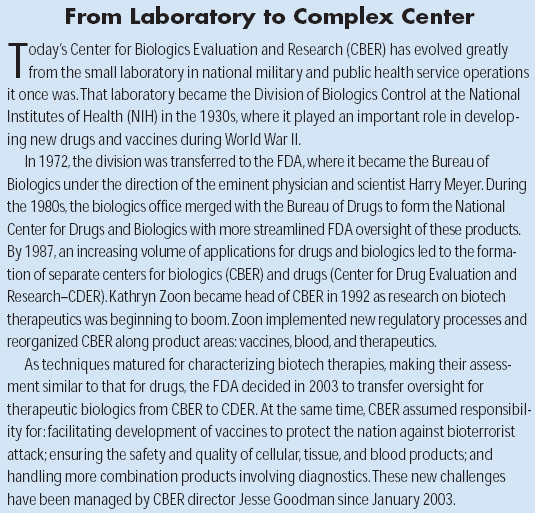
Regulatory/GMP Compliance
Latest News



The US Food and Drug Administration's Nanotechnology Task Force (www.fda.gov/nanotechnology/ nano_tf.html) has released a report recommending the agency develop guidelines and take other steps to address the benefits and risks of products, including drugs and medical technology, that use nanotechnology.

The US Food and Drug Administration (FDA, Rockville, MD, www.fda.gov) issued a revised draft guidance on July 20 to help ensure that the safety, purity, and potency of biologics products is not compromised as a result of innovative, flexible manufacturing arrangements.

With the advent of high-resolution mass spectrometers and highly sensitive MS instruments, vaccine characterization has entered a new phase.

Any endpoint considered appropriate to support approval, whether a surrogate or a clinical endpoint, must be supported by substantial evidence of effectiveness.

The corruption of China's food and drug sectors is not limited to one man. Likewise, real reform will require the efforts of many.

The main testing and regulatory provisions of the FOB legislation reflect multiple trade-offs between the demands of innovators and generics firms.

The US Pharmacopeia (Rockville, MD, USP, www.usp.org) recently announced that the implementation period for its USP–NF general notices statement requiring all manufacturers to conform to recently revised residual solvent standards in General Chapter <467> has been extended from July 1, 2007 to July 1, 2008.

The US FDA (Rockville, MD, www.fda.gov) recently announced the availability of a draft guidance, entitled, Q10 Pharmaceutical Quality System.

In late June and early July, the US Congress moved forward on three important bills affecting the biopharmaceutical industry, related to follow-on biologics, the Prescription Drug User Fee Act (PDUFA), and the 2008 FDA budget.


The FDA issued MedImmune, Inc. (Gaithersburg, MD, www.medimmune.com), a warning letter for violating the agency's manufacturing rules and held off approving the company's influenza vaccine for use in children younger than age five until the problems are resolved.

The US Food and Drug Administration (FDA, Rockville, MD, www.fda.gov) has issued final recommendations for increasing the supply of safe and effective influenza vaccines for both seasonal and pandemic use.

One goal of process characterization is establishing representative performance parameter ranges that can be used to set validation acceptance criteria (VAC). Characterization studies yield varying numbers of data points from multiple experiments, and may also include data generated at different scales (e.g., bench, pilot, and commercial), which add complexity to the analysis. Many statistical approaches can be used to set ranges from large data sets. As an example, we present the statistical considerations and techniques for setting validation acceptance ranges for a chromatography step used in purifying a recombinant protein. Performance parameter data from a combined data set consisting of 67 bench, six pilot, and three full-scale runs were analyzed using the statistical analysis software JMP (SAS Institute). The combined data set was used to compute tolerance intervals, so that sources such as scale and column feed material could be properly modeled. The resulting ranges were used to establish..

Outsourcing has been a cornerstone of our industry for decades.

FDA's approach involves adopting efficient strategies for targeting inspections to more high-risk operations likely to have the greatest impact on public health.

Following the US Senate approval of the FDA Revitalization Act (FDARA, S.1082) in May, the debate over drug safety and the reauthorization of the Prescription Drug User Fee Act (PDUFA) now moves to the House.

Membrane-based chromatography technologies sometimes offer advantages over resin-based technologies.

The information provided by analytical testing is important in determining whether additional clinical trails are necessary to bring a follow-on to market.

Lax enforcement arising from a lack of political will creates the potential for a loss of public confidence.

In March, the US Food and Drug Administration released a new draft guidance, along with its guidance agenda for the year.

Neotropix, Inc. (Malvern, PA, www.neotropix.com), a biotechnology company dedicated to the development and commercialization of virus-based therapeutics for the treatment of cancer and other diseases, received a warning letter (http://www.fda.gov/foi/warning_letters/b6308d.pdf) on March 23, 2007, citing deviations from good laboratory practices (GLP) regulations governing the proper conduct of nonclinical studies as published under 21 CFR Part 58.

The challenge will be to design a system that is flexible, yet appropriate, for the broad range of biological products and the varying quality control capabilities of different manufacturers.

Process monitoring ensures that the process performs within the defined acceptable variability that served as the basis for the filed design space.




